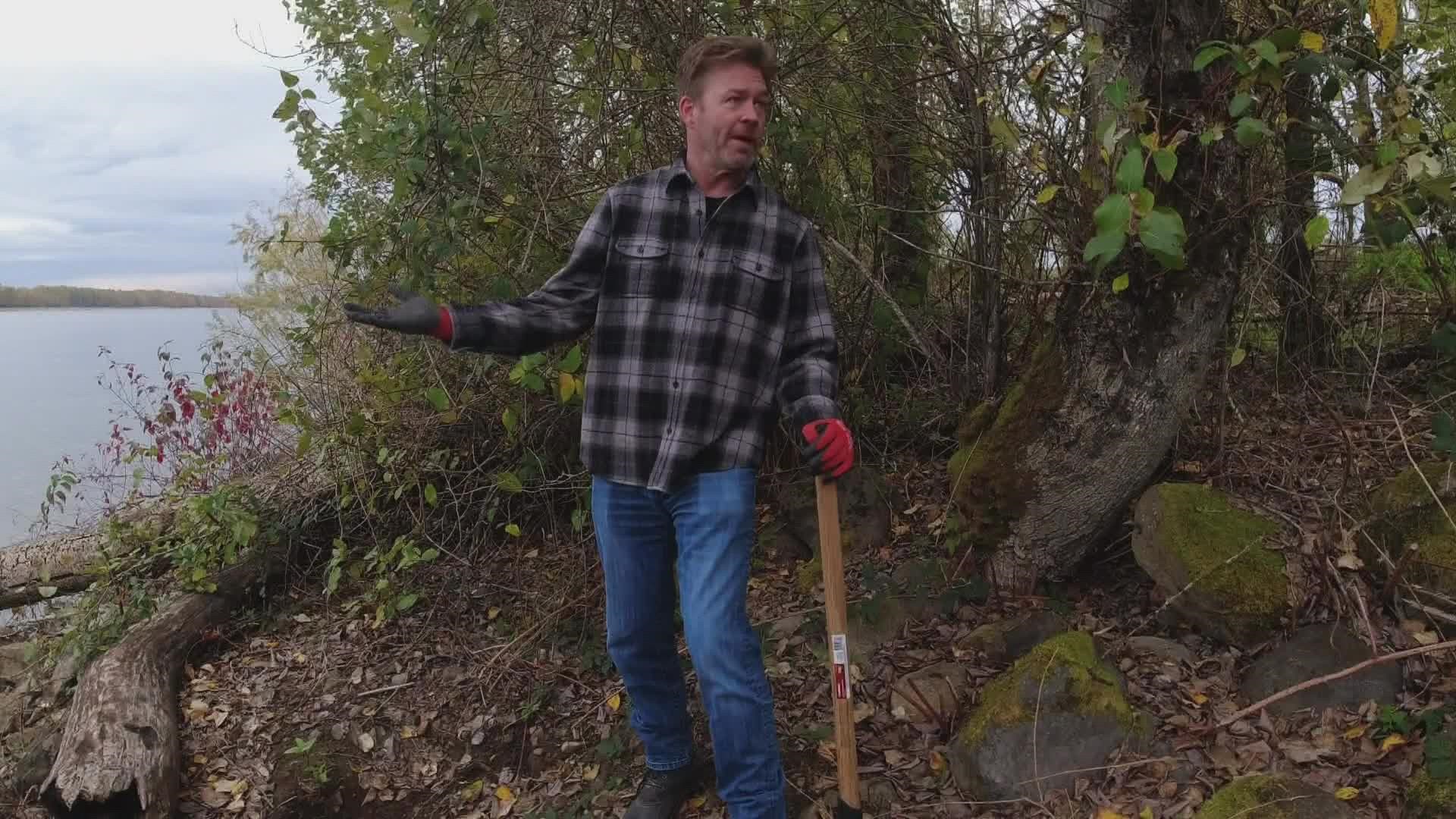VANCOUVER, Wash. — The day before Thanksgiving, Nov. 24, marks the 50th anniversary of one of the nation’s most compelling unsolved mysteries, the search for D.B. Cooper.
It's the only unsolved skyjacking in U.S. history. Eric Ulis is searching for evidence to try to finally learn what happened and maybe who Cooper really is.
“We know it’s real. There was a real guy who bailed out of the back of an airliner at 10,000 feet with $200,000 who we never did see or hear from again. So, it’s just an intriguing story,” said Ulis, one of the best-known amateur detectives currently looking into the D.B. Cooper story.
Last week, Ulis returned to the site along the Columbia River where the only evidence of D.B. Cooper was found after he hijacked a plane that left Seattle on Nov. 24, 1971.
On that day, Cooper, whose name appeared as Dan Cooper on his ticket, handed a flight attendant a note claiming that he had a bomb. After the plane landed at Sea-Tac International Airport, the FBI delivered four parachutes and $200,000 in cash that he demanded. After ordering the crew to take off and fly toward Mexico, he lowered the staircase that comes down at the back of the fuselage of the Boeing 727. He then jumped over southwest Washington with two of the parachutes and the money.
A massive search in the region around Lake Merwin proved fruitless.
In February of 1980, a child out with his family found three packets of rubber band-bound $20 bills buried in the sand outside of Vancouver, Washington in a place known as Tena Bar. The FBI dug there for days. So did former FBI agent and retired attorney turned sleuth Richard Tosaw, who came back and spent his own money hiring a boat and dive team to search the river, concluding that Cooper landed and drowned in the broad Columbia. No more evidence was found.
Ulis believes they were digging and diving in the wrong place.
“I think the evidence is absolutely clear," Ulis said. "I’m 100% convinced D.B. survived and walked away.”
Ulis reached a different conclusion than other investigators, based on the remnants of the algae found embedded in the deteriorated cash buried on the beach. Discovered by civilian investigator Thomas Kay, who was armed with high-tech equipment including electron microscopes, diatoms were located that he said could only have been found in the spring, not in the late fall when Cooper jumped. That, Ulis said, means Cooper did not land in the river. Based on Ulis' research, June of 1972 and June of 1974 were the only times the money would have been exposed to high Columbia River water capable of reaching the buried money before the bills were dug up in 1980.
“So, we know with certainty that the money did not enter the Columbia River on the night he jumped or anytime after he jumped for several months,” Ulis said.
Ulis believes D.B. Cooper landed within half a mile to a mile of the location the money was found and that he had a problem.
“He realizes, of course, that he can’t walk into town carrying a big white canvas bag with 20 pounds of $200,000 in cash, so he has to temporarily stash or bury the money somewhere," Ulis said.
Ulis said 50 years of erosion along the river now puts the spot the money was found 8 feet lower and about 15 feet offshore. But what about the parachutes? What about the briefcase that held the “bomb” that could well have been a fake? Ulis does not expect to find any more cash but believes that Cooper dug a series of holes in the sand going away from the beach, different holes that held other pieces of evidence of the crime including the parachutes and, perhaps, the briefcase.
That brings Ulis to the late spring of 1972, some seven months later.
“And I believe hearing about the flood, he figured he would need to get back to get the money, or it was going to be swept out to the Pacific Ocean," he said. "Or, somebody would come across it, half a bag of two hundred grand sticking out of the sand.”
When retrieved, Ulis believes the three packets of money, found with evidence of rotted rubber bands, fell out.
In 2016, the FBI officially closed its D.B. Cooper case. It also posted thousands of pieces of documents and evidence online and is now leaving it up to the public to try and solve it. Amateur investigators like Ulis are running with it.
Last week, he returned with three fellow Cooper fans to the Vancouver site to dig. It's a site that decades ago had been capped with a thick layer of dirt and rock to resist further erosion. He is certain of the spot because several unique trees provided landmarks that line up with the original place the money was found.
“I don’t believe it was one big pit,” Ulis said. “Probably had three, smaller sized holes with items in different holes, starting along this imaginary line [gesturing from one of the trees] going down ultimately to where the money was found. The idea being he could come back at a later time and retrieve all the major items.”
Ulis also believes the burial of the site by the layer of erosion-resistant rock and dirt may have created a time capsule, helping preserve what was below, likely the parachutes. He thinks Cooper would have concluded that it was too risky to leave the briefcase behind to fall into the hands of law enforcement, but if it was there, it could potentially provide evidence, including fingerprints and DNA if found.
“That could break the case wide open from there,” Ulis said. “If we happened to find that.”

